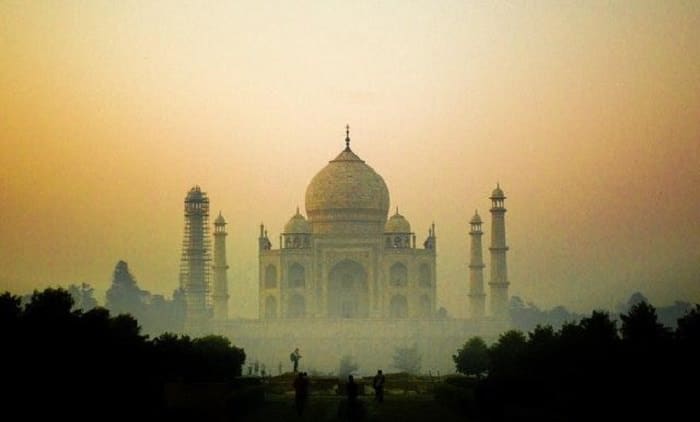Urbanization is not really something we can control – ever. It is an inevitable thing and it happens everywhere. It is true, all the growth and the expansion is a good deal for businesses and for many people, however, we are talking about the loss of historical areas, a heritage that is valuable for many people. Heritage temple towns are usually the most frequent targets for the rapid transition to urbanization, and it is often accompanied by the alteration of historical areas.
How is India affected?
India is a developing country, and urbanization there is taking place really fast. It is true, it threatens many heritage towns that are full of architectural, cultural, historical and aesthetic significance. When talking about metropolises in India, we are talking about more than a million of people that have increased from 18 in 2001 to 5 in 2011. A very rapid transition happens to all the historical temple towns, due to urbanization and the change in their built heritage.

Related: What does India need to do to create more happy cities?
How many Heritage Sites are in India?
Right now, in India, there are 32 World Heritage Sites that are recognized by The United Nations Educational, Scientific and Cultural Organization – UNESCO. Of all of these 32, 25 are cultural sites and 7 are natural sites. All of the cultural sites are known for their amazing architecture, all the cave paintings and the stone art, and the temples that have sculptures carved on them.
Besides those 25 cultural world heritage sites and, of course, monument, there is also a full list of tentative sites that have been given to UNESCO. This list has about 46 historical, natural and cultural sites from India – such as Glorious Kakatiya Temples, Ekamra Kshetra, Harmandir Sahib, Aihole Monuments, Badami cave temples, the Nalanda University and, of course, the Terracotta Temples of Bishnupur. Hundreds of buildings with significant historical importance in India are in extreme disrepair.
While popular monuments like the Taj Mahal are well-maintained and well-funded due to the great public interest, other lesser-known monuments are becoming more and more dilapidated. Exposure to the elements, weather conditions and natural disasters have contributed to the deterioration process, and other factors, caused by people like illegal settlers and vandalism, have greatly accelerated the destruction.
The process of urbanisation has done a huge number on the transformation of hubs in India. Areas in Mumbai and other cities that have a huge concentration of slums have undergone numerous attempts of slum rehabilitation from both the public and private sector. Similar efforts to transform cityscapes have accelerated the destruction of historic sites.
Construction around historical sites has increased over the last couple of years. And with India’s population growing, activity is expected to trend only upward. With most of India’s heritage structures located in cities with dense populations, protecting these buildings might give way to the burgeoning need for housing.
How many heritage monuments and sites are really there, in India?
The Archaeological Survey of India is currently protecting 3,650 heritage monuments and sites. Local government units have also marked various buildings in their jurisdiction that contain rich cultural and historic significance. But despite the buildings being protected by state laws and offices, the surrounding area is not.
Funding for conservation projects is also highly imbalanced. Most groups involved with these dilapidated historic sites have noted that most funding goes to which structure attracts more tourists. But the historic sites that India is known for are currently going through congestion of tourists, disrupting the daily lives of the citizens living near them. Conserving other historic sites helps alleviate tourist traffic away from these locations; funding for conservation projects should be assimilated fairly.
In order for various preservation efforts to really pull through, conservationists have to work with the local community to get them on board. Citizens living around heritage sites have to see the importance of preserving structures of cultural and historic importance. By including the community’s well-being in conservation efforts such as building more toilets and improving sewage systems, this can increase citizens willingness to participate in the preservation of these historic sites.
How important is JDH for this cause?
Growth and progress has to be balanced with historic preservation. The walled city of Jodhpur has made some success in supporting both urbanization with historical and cultural preservation. The JDH Urban Regeneration Project spearheaded by V Sunil has made conservation of historically important buildings possible through restoration and repurposing. Historic preservation painting and cleaning techniques have allowed dilapidated Jodhpur buildings to be restored to their former glory and be enjoyed by the people of Jodhpur and its visitors.
Why should we care for the JDH Urban Regeneration Project?
Projects like the JDH Urban Regeneration Project allow the public and the government to see these structures in an entirely new light. Whereas before, the protection of such buildings were seen as a burden or responsibility, they are now being viewed as having economic potential. From an economic standpoint, it makes sense. Traditional urbanization relies heavily on Western schools of thought and practices, which results in a more Western aesthetic in the process. By conserving these heritage buildings, cities in India are allowed to progress without losing their cultural identity and history.
Related: Empowering Rural Indian Women
What’s JDH’s story? What are its aims?
The JDH wants to restore the heritage to their well-known glory, giving a “new life” to the invaluable landmarks everywhere. They come with the power of technology, commerce, design and culture and they have begun to come together on the ancient grounds. They are looking to revitalize the places. The transformation is being done by local expertise and insight, new ideas are always welcomed, about infrastructure or the influence the world has on them. The result of this is, of course, a work in progress for a better world.